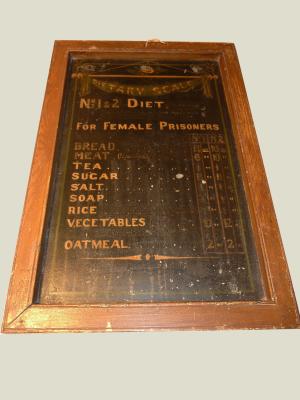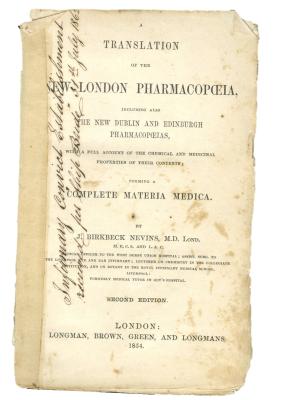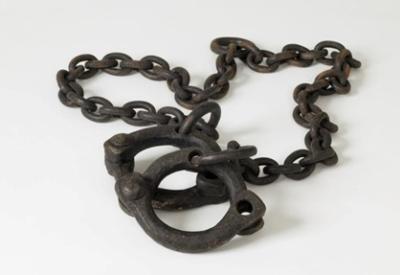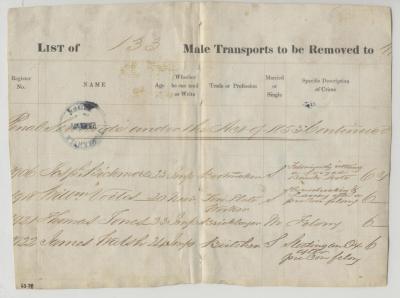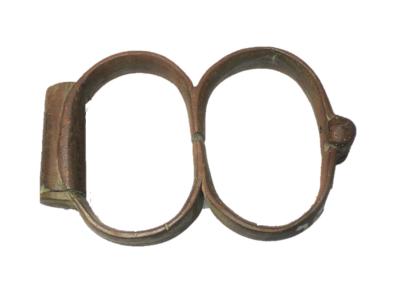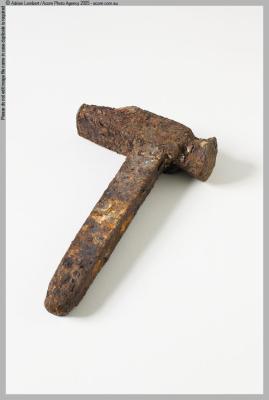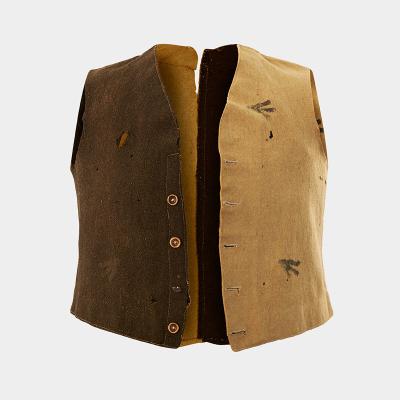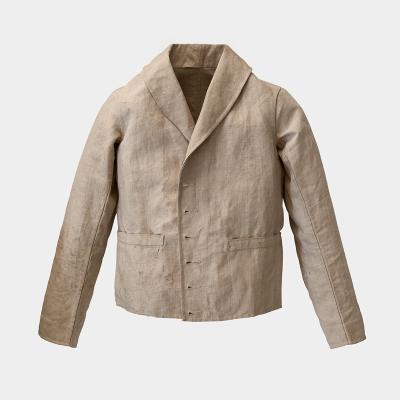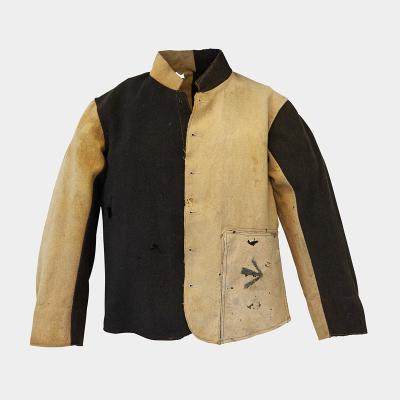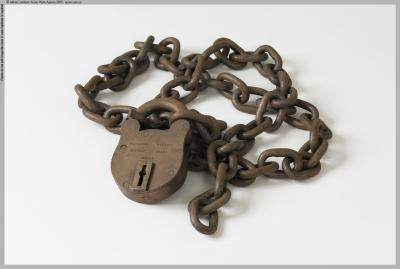APOTHECARY BEAM SCALES
(a) Small, rectangular, wood and metal base of apothecary beam scales set. Consists of rectangular wooden base with single drawer, with a vertical brass cylindrical shaft with adjustable section. On top of shaft is a removable key to attach weight distributor. The bottom of the shaft has a lever.
(b) Long, thin, metal shaft of apothecary beam scales set. Two arms, one with two holes, and the other thinner and shorter. The two arms extend to hold weighing scales. Imprinted on one side, 'W.A WEBB LTD' 'LONDON'. On the other side is imprinted, 'CLASS B' 'TO WEIGH 2OZ'.
(c) Long, thin, metal, arm of apothecary beam scales set. Open hook at top with bent handle connected to two crossed arms to hold weighing pan.
(d) Long, thin, metal, arm of apothecary beam scales set. Closed hook on top with two adjustable sides which connect to two crossed arms to hold weighing pan.
(e) Small, round, metal, weighing pan of apothecary beam scales set. Three holes on outer edges.
(f) Small, round, metal, weighing pan of apothecary beam scales set
(g) Small, round, glass liner for pan of apothecary beam scales set. Glass broken into two parts; bottom half larger and top half secured with masking tape.
(h) Small, round, glass liner for pan of apothecary beam scales set.
Provenanced to Fremantle Prison.
Details
Details
'W.A WEBB LTD'
William A. Webb was a London scales manufacturer and had a shop from 1895-1905. He used the name 'W A Webb Ltd' from 1914-1933.
As each prisoner’s diet was strictly allotted, weights and scales were used daily at Fremantle Prison to help the cooks ration out a man’s portion for each meal.
This type of scale is often referred to as equal-arm or beam scales. It is a simplistic design which uses a balanced 'beam' or 'arm', so that equal lengths protrude horizontally off the centre, with the weighing pans hanging off the ends of the beam on cords, chains or rods. The unknown quantity to be weighed is placed in one of the pans and in the other pan are placed weights of a known quantity. When the beam becomes exactly horizontal the correct weight has been calculated.
The health and wellbeing of the prisoners was the responsibility of the Prison’s Surgeon. To assist with keeping the inmates fit and well, and to avoid any outbreaks of disease, the Surgeon was also responsible for designing a specially formulated diet. During the early twentieth century the diet for male prisoners’ varied day-to-day, but the typical menu consisted of oatmeal porridge and a cup of tea for breakfast, a sandwich, vegetable soup and a cup of tea for lunch, and tea and bread for supper. A job in the Prison’s kitchen was a highly sought after position by most prisoners. To acquire such a position inmates had to be recommended by a Warder, then interviewed by the instructor. Work began at 5am, and for most prisoners lasted until 4pm. The kitchen staff prepared up to 500 meals at a time. There were never any communal dining facilities at Fremantle Prison, and meals were placed on trolleys and taken to the various Divisions where prisoners lined up, collected what was on offer and retired to eat either in their cells or out in the exercise yards.
